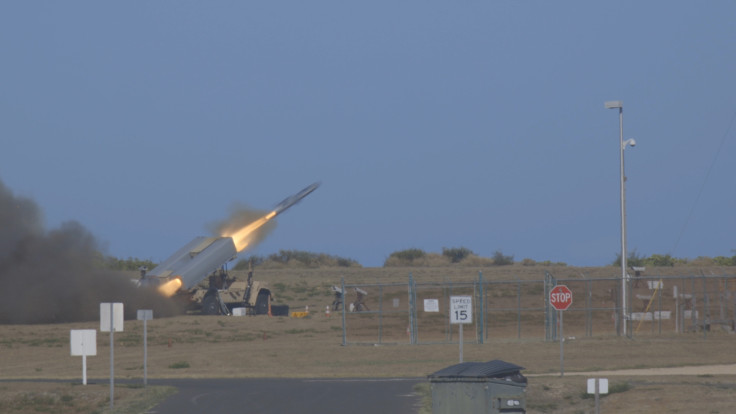Marines To Deploy New NMESIS Weapons System To Destroy Chinese Warships
KEY POINTS
- NMESIS is an anti-ship battery developed to undertake land-to-sea attacks
- The missile system will be first delivered to the already operational 3rd Marine Littoral Regiment in Hawaii
- By 2025, the Marines will have a total of 108 NMESIS systems in ready-to-launch missile containers
The U.S. Marine Littoral Regiments to be established in Japan and Guam will be armed with the new Navy Marine Expeditionary Ship Interdiction System, or NMESIS for short, enabling them to target and destroy Chinese warships.
The NMESIS is an anti-ship battery developed to undertake land-to-sea attacks. The system is currently being tested and is expected to be deployed by the end of fiscal 2023, according to a Monday report on Task & Purpose. The system will be first delivered to the already operational 3rd Marine Littoral Regiment, or MLR, in Hawaii.
The NMESIS system features the Navy's latest anti-ship missile, the Naval Strike Missile (NSM), a high subsonic sea-skimming radar-evading weapon with a range of around 100 nautical miles (114 miles).
Each NMESIS carries two NSM containers mounted on top of a remote-operated unmanned version of the Joint Light Tactical Vehicle (JLTV). The vehicles are operated remotely for the protection of the NMESIS crew, ensuring their safety in the event of a counter-attack.
By 2025, the Marines will have a total of 108 NMESIS systems, or 216 NSMs in ready-to-launch missile containers, according to a report by Naval News.
MLRs are created as part of the Marine's Force Design 2030 plan, meant to make the force lighter and expeditionary enough to win a war against China. Under the plan, the 3rd Marine Regiment based in Hawaii was redesignated as the 3rd Marine Littoral Regiment in March 2022.
Washington now plans to extend the idea of dispersing the U.S. Marine units throughout Japan's Okinawa islands and the U.S. military base at Guam to deter China's military activity in the region. As reported on January 10, the plan is to cut down on aircraft numbers and heavy artillery, in favor of smaller and more "dispersed" forces.
The Marine Corps will repurpose the 12th Marine Regiment currently present in Okinawa to create the 12th Marine Littoral Regiment. Meanwhile, the force also plans to transfer the 4th Marine Regiment from Okinawa to Guam to serve as the 4th Marine Littoral Regiment to establish the third Marine Littoral Regiment by 2027, the Washington Post reported.
Deployed to remote Pacific islands, each MLR comprises roughly 2,000 Marines who will use amphibious ships and other naval vessels to enable rapid and flexible deployment of forces to remote islands for securing footholds to carry out long-range attacks on enemy ships and support the U.S. or allied troops in the region. Among the weapons these forces are expected to use is the NMESIS to enable an attack on Chinese warships.
However, the idea of using the NMESIS anti-ship missile battery as a Chinese ship-killer system has its own share of critics. With its limited range, the NSM loaded to NMESIS will only be effective against Chinese ships closing in on Japan. However, in the case of a Chinese attack on Taiwan, its use is limited, because the system would need to be present on the island to counter a massive Chinese invasion or large-scale amphibious landing.
The recent war game conducted by the think tank, Center for Strategic & International Studies (CSIS) also showed that in case of an attack on Taiwan, the marine units were only successful if they were already forward deployed and that they could not be resupplied in case the conflict broke out.

© Copyright IBTimes 2024. All rights reserved.






















